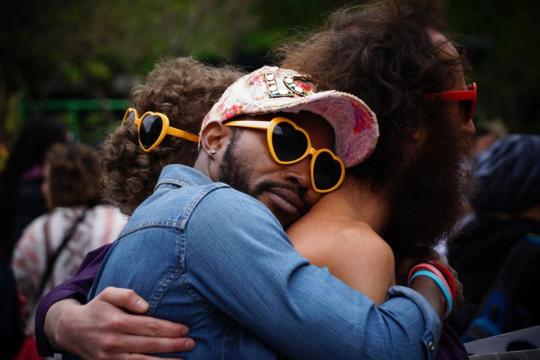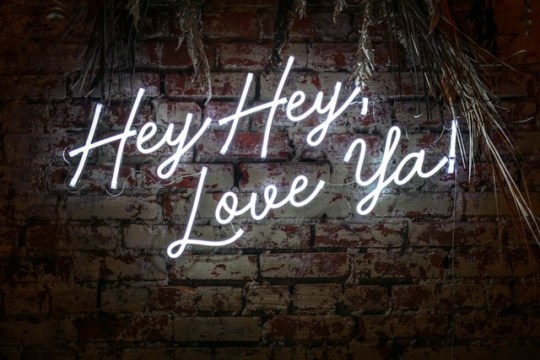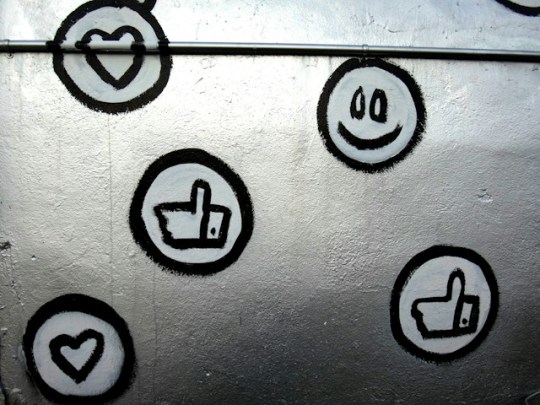Text
Do you remember how last week I discussed how homophily encourages us as humans to branch out to those who think, act, and feel similarly to us? Do you also remember how I mentioned that this tendency can be seen in a positive light through the use of the algorithm? How about how the algorithm can help populate content geared toward our areas of interest, such as that one series of movies you watch in guilty pleasure even though they are not seen as "cool" or "entertaining"?

We will flip that script and see how homophily and algorithms can be used for not-so-good things. Are you as intrigued and excited as I am? (If you would like to play catch-up from last week, or if you would like a quick refresher, click here to read about the birds!)

But what is a bias bubble, anyway?
I know you have heard people refer to "living in a bubble" before, but it may not be so far off from reality with how social media can be. Kaiser and Rauchfleisch (2020) mentioned that a "bubble" can be formed around individuals by how the algorithm is designed to work (Kaiser & Rauchfleisch, 2020). What does that mean, exactly?
Look at how algorithms are designed - they keep spoon-feeding content similar to what the user has previously viewed, sometimes in a continuous loop. That continuous content loop can keep a user "trapped within a bubble," so to speak. While within a bubble, nothing comes in, and nothing goes out - this is also similar to content that can be viewed on social media.

Content bubbles ensure we view the same content repeatedly, forever in a loop. For some, this could mean something as insignificant as makeup tutorial videos, gaming strategy videos, or even how-to videos. However, that continuous content stream can create the perfect storm for "us versus them" thinking for many others through the means of cognitive bias.
A perfect example of allowing cognitive bias to flood the mind negatively through social media is conspiracy theory content. We all have encountered that person who continually posts about various conspiracies. Let us say you were bored one day and decided to click a video about cryptids. Once that link is clicked, you have encouraged the algorithm to feed you more information about cryptids, which can bleed into other conspiracy theories. After so many hundreds of hours of viewing cryptid-related content, it would be difficult to not believe.

Oh.... now I get it. I don't want it anymore.
As an American, I see this played out in real-time through the political environment on social media. Family members and friends of mine lean in opposite directions concerning political views and constantly post such aligned content to their walls, making my feed a weird amalgamation of "red" versus "blue" (not the old YouTube show about Halo, sadly).
When you're stuck in the bias bubble, it is incredibly easy to continually find the same type of content being regurgitated, which can morph into something more hateful and sinister the longer you allow yourself to be stuck inside that bubble. Lee, Karimi, Wagner, Jo, Strohmaier, and Galesic (2019) found how one thinks or views their personal social media groups influences their own behaviors, thoughts, and beliefs, thereby creating a bias based on the very influence of their social media groups. (Lee et al., 2019).

How can I break free of the bubble of bias?
It is physically accessible, but may not be mentally easy to break free from the bias bubble. To put it simply: use that beautiful brain of yours! Critical thinking is a delightful tool any human on the planet can use to be open-minded about any topic. Meegan (n.d.) shared the depth of critical thinking to be artful, analytical, and evaluative (Meegan, n.d.).
Critical thinking is artful because it takes consistent practice over one's lifetime - in fact, most do not ever truly "master" the art! Critical thinking is analytical because it takes breaking down each thought, feeling, or opinion bit by bit until you get to the core of the rationality behind it. Critical thinking is evaluative because it is up to each of us to find the standard behind each thought, feeling, or opinion we come across.

Great - what does Critical Thinking have to do with breaking the bias bubble?
It is really so simple: find someone who does not think like you! In social media, this can easily be done by utilizing the search bar to type in a topic you know nothing about and read away! If you do not know what certain words or phrases mean within that community, ask away or consult a dictionary - which is at our fingertips thanks to our mobile devices!
Try flexing that beautiful brain of yours today!
References
Kaiser, J., & Rauchfleisch, A. (2020). Birds of a feather get recommended together: Algorithmic homophily in YouTube’s channel recommendations in the United States and Germany. Social Media + Society, 6(4).
Lee, E., Karimi, F., Wagner, C., Jo, H., Strohmaier, M., & Galesic, M. (2019). Homophily and minority-group size explain perception biases in social networks. Nature Human Behaviour, 3(10), 1078-1087.
Meegan, G. (n.d.). What is critical thinking? [Blog post]. Links to an external site. https://theelementsofthought.org/what-is-critical-thinking/
#go re-watch red vs blue#break the bias bubble#i want to break free#critical thinking is awesome#psychology of social media class
0 notes
Text
If "Birds of a feather flock together," which bird am I?
Numerous types of birds inhabit our beautiful planet: peacocks, mockingbirds, macaws, puffins, hummingbirds, eagles, and more. Each bird is unique in its location, plumage, eggs they hatch, and their respective bird communities. Regardless of bird species, their communities are outstanding to view, as they all stay by their fellow bird while they look for places to build nests or migrate across the globe.
After all, birds of a feather flock together!

Wait... Did you think I planned to spend this entire post discussing birds?

No, my friends, this is my Psychology of Social Media post for the current week - birds are not in the picture here! But why bring up birds in the first place?
It's all about Social Media, of course!!
Social media can do much for society as a whole, as well as for individual people. If you remember from last week, I mentioned what types of motivations people have throughout their lives and what can motivate people to use social media. Social interaction was listed as one of the motivations for using social media, but there's more to this topic than was previously discussed. Let's dive a bit further!
If you look closely at the numerous ways one can communicate on practically any social networking site, you'll find that it all boils down to creating a community. As humans are social creatures, we are motivated to build relationships and communities with one another. But what encourages us to build, find, or join a community online?

Kim, Wang, and Oh (2016) found that the collective need to belong greatly encouraged social media use among college students, stating that if they had a more significant amount of desire to need to belong in a community that enjoyed their presence, the greater the probability that they will turn to social media for more communication (Kim et al., 2016).
Wohn, Carr, and Hayes (2016) shared that perceived social support is essential to driving the motivations of social media users through likes/favorites, including the depth of the relationship shared by the users who like/favorite the posts significantly increases perceived social support (Wohn et al., 2016). This means the more a user connects with other like-minded users and creates/posts content that their fellow users would enjoy, the more likes/favorites they will receive, building that sense of perceived social support.

Have you ever heard of a term called homophily? No, it isn't a fancy term for the breakfast food known as grits nor a new evolution of humans. Homophily is the tendency to branch out to, or feel attracted towards, people who are similar to you. In other words... "birds of a feather flock together"! (See, I brought it back to birds. There was a reason for that introduction, after all!)
Figeac and Favre (2016) state that online conduct that is geared towards homophily can strengthen the internalized notion of certain relationships becoming enhanced (Figeac & Favre, 2016). In other words, people who continually seek out like-minded individuals through online communities feel a sense of "togetherness" as they interact more frequently through social media. There are many avenues that social media users can utilize to find that sense of community, including online groups (such as ones found on Facebook) and online forums (such as subreddits found on Reddit).

Put some rhythm on that Algorithm!
So, how do social networking sites encourage even further use? Through an algorithm, of course! No, an algorithm isn't one of America's vice presidents playing a beat on the drums (here's looking at you, Al Gore). Instead, an algorithm is actually a set of computer rules and calculations used by various social media platforms to consistently generate content for users to interact with.
When most people think of an algorithm, they think of TikTok, which is famously known for relying on an algorithm to continually churn out content for users to view and interact with. In fact, many users on TikTok joke about the type of content that commonly populates their "FYP" or For You Pages. In fact, I've noticed when my siblings and friends send me certain types of TikToks, I tend to see similar content floating through my own FYP.

Homophily + Algorithm = ?
This means homophily and algorithms work together to encourage users to seek out like-minded individuals through online communities and continually view/share content that is geared toward those communities through social media. Something as small as sharing cute pet videos with colleagues who enjoy pets or something as significant as sharing politically charged content with friends within the same political spectrum can encourage continued social media use globally.
The number of online communities is vast. Some communities can easily blend together, whereas others stand out independently. No matter which online community you feel pulled towards, the algorithm will ensure you view similarly themed content, which will markedly increase your continued use of social media as a whole.
Happy algorithm surfing, everyone!

References
Kim Y., Wang Y., & Oh J. 2016. Digital Media Use and Social Engagement: How Social Media and Smartphone Use Influence Social Activities of College Students. Cyberpsychology, Behavior, and Social Networking. (19)4, 264-269.
Wohn D., Carr C. T., & Hayes, R. 2016. How Affective Is a “Like”?: The Effect of Paralinguistic Digital Affordances on Perceived Social Support. Cyberpsychology, Behavior, and Social Networking, 19(4), 562-566.
Figeac, J., & Favre, G. (2023). How behavioral homophily on social media influences the perception of tie-strengthening within young adults’ personal networks. New Media & Society., 25(8), 1971–1990.
Schroeder, J. E. (2021). Reinscribing gender: Social media, algorithms, bias. Journal of Marketing Management, 37(3-4), 376-378.
#psychology of social media class#homophily is fun for everyone#why are we so alike#flocks fly together
0 notes
Text
Motivations, Attention, and Social Media or: How Do I Grab and Keep the Attention of the Average Person?
Hey, You! Yeah, YOU!

Did I Get Your Attention?

Well? How about now?
When it comes to using social media, whether it be scrolling or posting, all of us are motivated to do so for one reason or another - finding a community one can relate to, looking for the perfect knick-knack for your living space, looking for a group of people to connect with, or even gaining a following can encourage social media use. Let us start at the beginning - what is motivation?
Longe (2016) shared that there are three types of motivation that humans experience - primary, stimulus-seeking, and learned (Longe, 2016). Primary motivations are found through food, water, and shelter for all human beings; stimulus-seeking motivations are internal, such as emotional connections or intellectual nourishment; learned motivations come from incentives or catalysts. Longe continues that motivations encourage or provoke people to act in any particular way (2016). Numerous reasons would inspire anyone to use social media; a prevalent reason an individual would want to use social media comes from stimulus-seeking - sheer boredom!
What motivates us to use social media? Lee, Lee, Moon, and Sung (2015) found that social interaction, escapism, and peeking are a few motivations for using Instagram. However, one could argue this to be universal through the bulk of social media (Lee et al., 2015). There are many ways to attempt to seek an end to boredom through social media - Instagram, Facebook, X (or the website formerly known as Twitter), and TikTok are all designed to keep the engagement of the average person. For example, loneliness could be a catalyst that encourages anyone to utilize social interaction, escapism, and peeking within social media, including engaging in parasocial relationships with celebrities and social media influencers (Lee et al., 2015).
Wait, Come Back! There's More!

So, how do big brands attract attention within the jungle that is the realm of social media? Through attention-grabbing antics, of course! Brady, Gantman, and Van Bavel (2019) determined that moral and emotional posts are essential in being noticed instead of using more neutral tones and feelings (Brady et al., 2019). Tsimonis and Dimitriadis (2014) both have found that posting daily comments and replies with their consumer base, sparking various competitions with prizes, launching new products or services, and gaining and offering white glove service are all vital to gaining the attention of the general public (Tsimonis & Dimitriadis, 2014).
The next time you scroll through your social media platform of choice, take a moment and observe what you see on the page. Do you see bright, appealing colors and images? Are there influencers offering reviews for various goods through paid promotional content? Do you see multiple brands posting engaging content of all types? Take note of what gains your attention from all of these, and consider your motivations for using and what holds your attention on social media. You might be surprised by what you learn about yourself!

References
Longe, J. L. (Ed.). 2016. Motivation. In J. L. Longe (Ed.), The Gale encyclopedia of psychology (3rd ed., Vol. 2, pp. 778–780). Gale.
Lee, E., Lee, J-A., Moon, J. H., & Sung, Y. (2015). Pictures speak louder than words: Motivations for using Instagram. Cyberpsychology, Behavior, and Social Networking, 18(9), 552–556.
Brady, W. J., Gantman, A. P., & Van Bavel, J. J. (2019). Attentional capture helps explain why moral and emotional content go viral. Journal of Experimental Psychology: General, 1–11.
Tsimonis, G., & Dimitriadis, S. (2014). Brand strategies in social media. Marketing Intelligence & Planning, 32(3), 328–344.
#psychology of social media class#motivations in psychology#pay attention to me#do i have your attention yet
1 note
·
View note